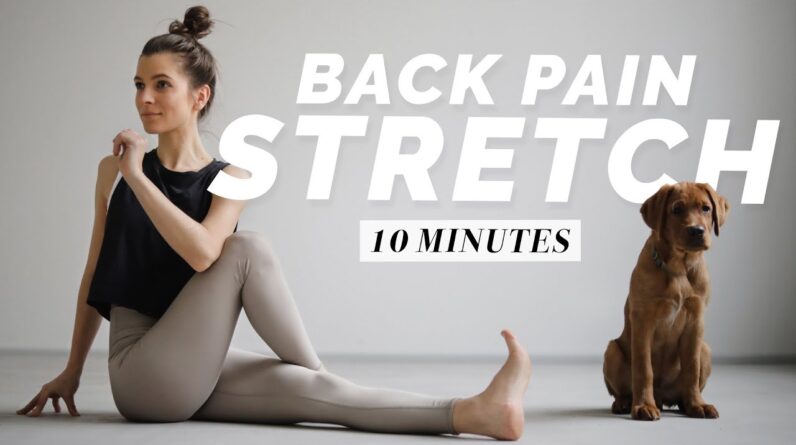Welcome to Yoga Dose, where we believe in the power of yoga to heal the mind, body, and soul. If you’re looking for a way to relieve back pain and increase your flexibility, our 20-minute yoga stretch routine for sciatica is just what you need. In this blog post, we’ll guide you through a series of poses that target the lower back, hips, and hamstrings to help alleviate pain and improve overall mobility. So roll out your mat, take a deep breath, and let’s get started!
Introduction
Back pain is a common ailment that affects numerous people worldwide. It can be caused by a myriad of factors, including poor posture, a sedentary lifestyle, or a previous injury. One of the most common types of back pain is caused by sciatica, which occurs when the sciatic nerve is compressed or irritated. Fortunately, there are several ways to alleviate sciatic pain, and yoga is one of them. In this article, we’ll be sharing a 20-minute yoga stretch routine that can help relieve sciatica and increase flexibility. Let’s dive in!
The Benefits of Yoga for Back Pain
Yoga has been shown to be an effective way to alleviate back pain, particularly when it comes to sciatica. Yoga poses can help stretch and elongate the muscles around the spine, improving flexibility and reducing stiffness. Additionally, yoga can improve posture, strengthen the core, and reduce stress, all of which can contribute to reduced back pain.
The 20-Minute Yoga Stretch Routine for Sciatica and Increased Flexibility
- Cat-Cow Pose
Start with the cat-cow pose to warm up your spine. Begin on your hands and knees, with your wrists under your shoulders and your knees under your hips. As you inhale, tilt your pelvis up and arch your back, lifting your head and chest up. As you exhale, round your spine and drop your head and tailbone down.
- Downward Dog
From the cat-cow pose, transition into downward dog. Lift your hips up and back, straightening your legs as much as possible. Push your hands into the ground, and press your heels into the mat.
- Pigeon Pose
Next, move into pigeon pose. Bring your right leg forward and place it in front of your left knee. Extend your left leg back, keeping it straight. Fold forward over your bent right leg, resting your forehead on the ground if possible. Repeat on the other side.
- Child’s Pose
Move into child’s pose to stretch out your lower back. Lower your knees to the mat, keeping your toes together and your knees apart. Stretch your arms out in front of you, and rest your forehead on the ground.
- Cobra Pose
Lie on your stomach, placing your hands beneath your shoulders. As you inhale, lift your chest and head up, pressing your hands into the ground. Keep your shoulders down and away from your ears.
- Seated Forward Fold
Sit down with your legs stretched out in front of you. As you exhale, hinge forward from your hips, reaching for your toes. Keep your back straight, and lengthen your spine.
- Bridge Pose
Lie on your back with your knees bent and your feet flat on the ground. Press your feet and arms into the ground, and lift your hips up as high as you can.
- Happy Baby Pose
Lie on your back, and draw your knees up toward your chest. Reach for the outside edges of your feet, and draw your knees down toward your armpits.
Conclusion
Sciatica can be a painful, limiting condition, but incorporating yoga into your daily routine can help alleviate symptoms and increase flexibility. This 20-minute yoga stretch routine is a great place to start, but remember to listen to your body and modify poses as necessary. With consistent practice, you may see a significant improvement in your back pain.
FAQs
- Does yoga really help with back pain?
Yes, yoga can be an effective way to alleviate back pain, particularly when it comes to sciatica. - How often should I practice this yoga routine?
To see the most significant results, practice this routine at least 3-4 times per week. - Can I still practice this routine if I’ve never done yoga before?
Yes! This routine is suitable for beginners, but remember to listen to your body and modify poses as necessary. - How long will it take to see results?
Every individual is different, but with consistent practice, you may see a significant improvement in your back pain within a few weeks. - Are there any poses I should avoid if I have back pain?
If you have back pain, it’s important to listen to your body and avoid any poses that cause pain or discomfort. Speak with a yoga instructor if you’re unsure which poses are best for you.







